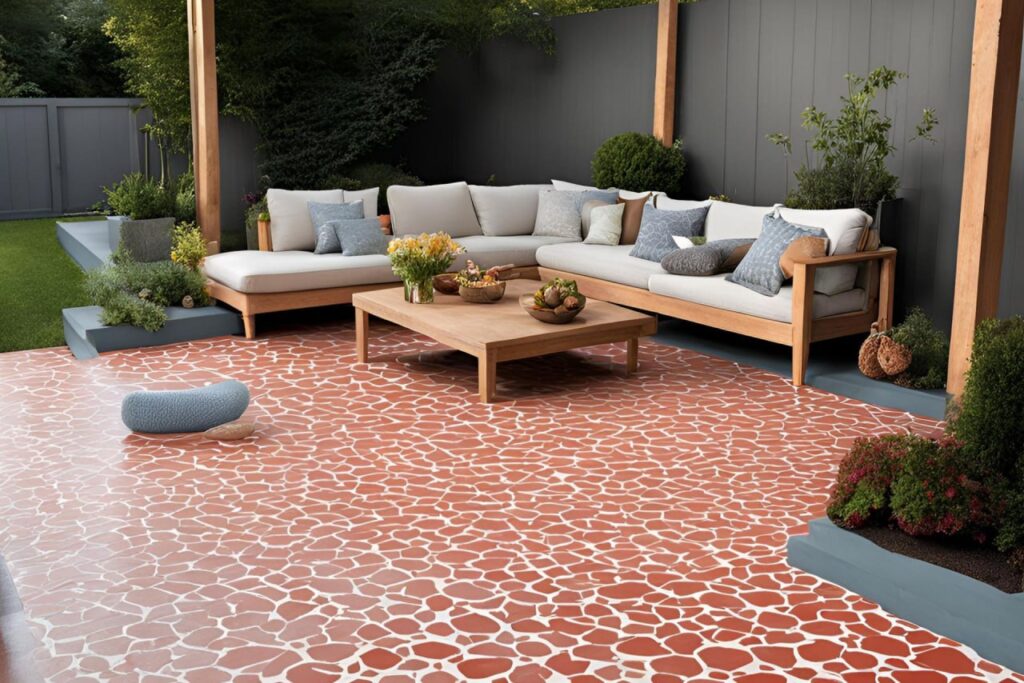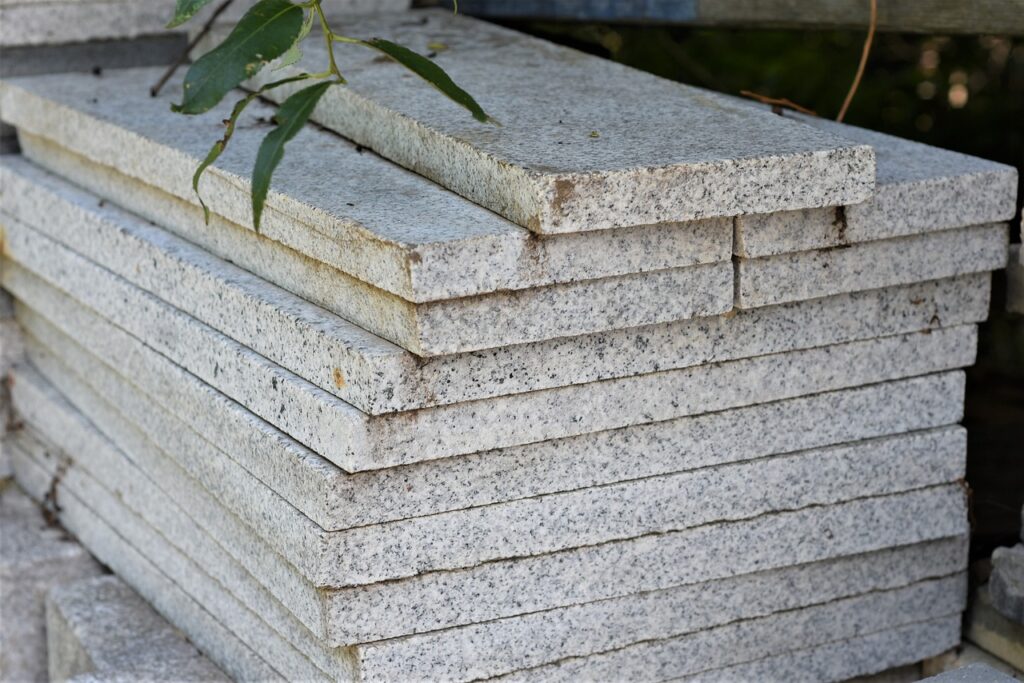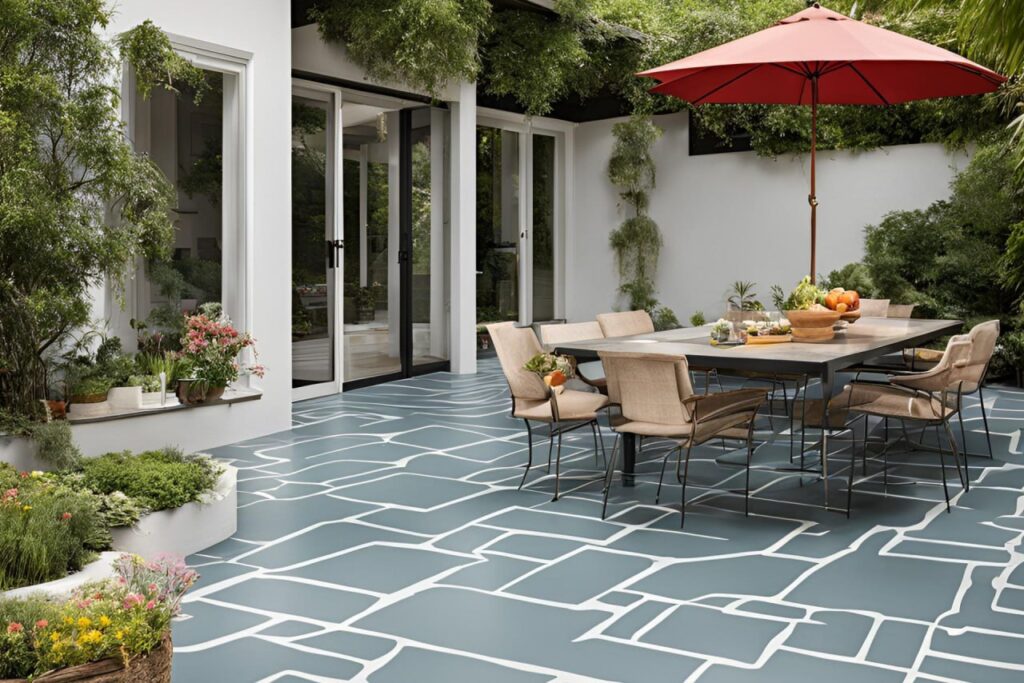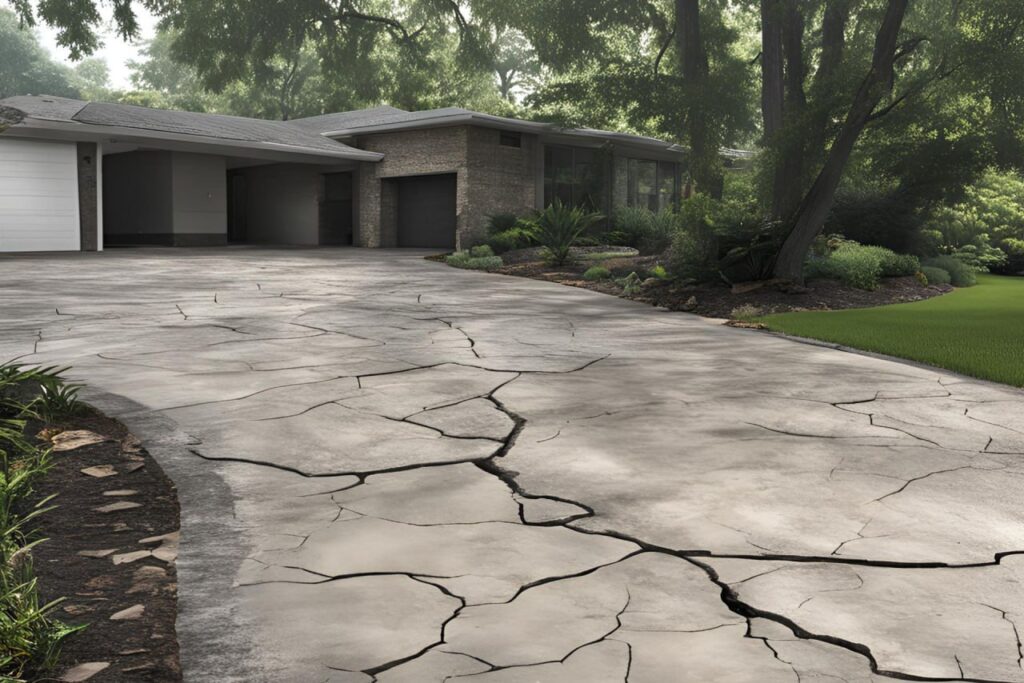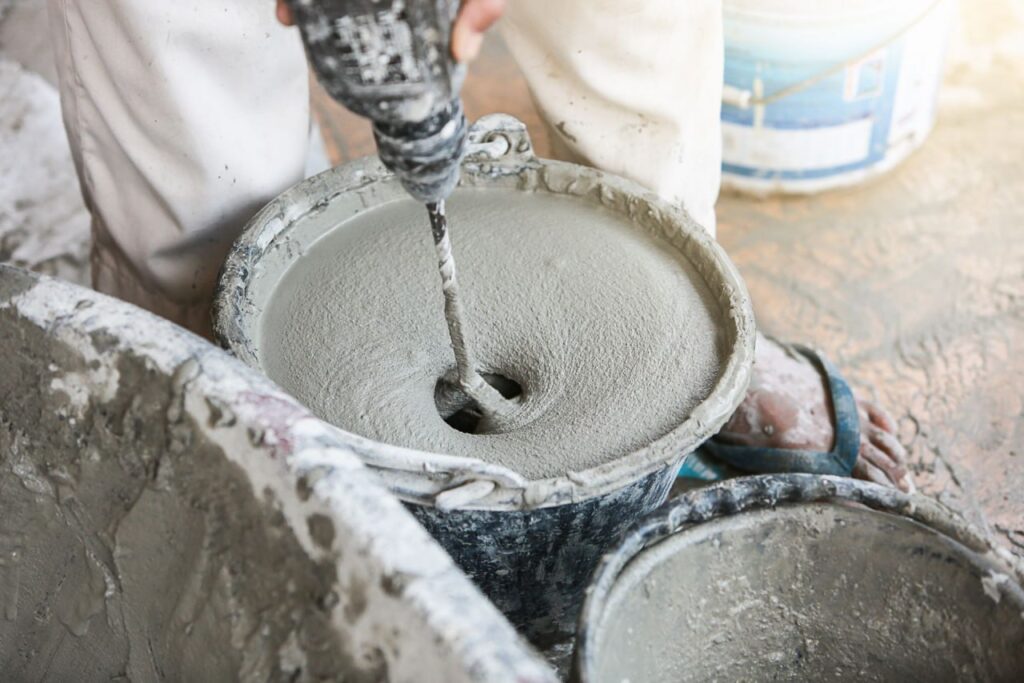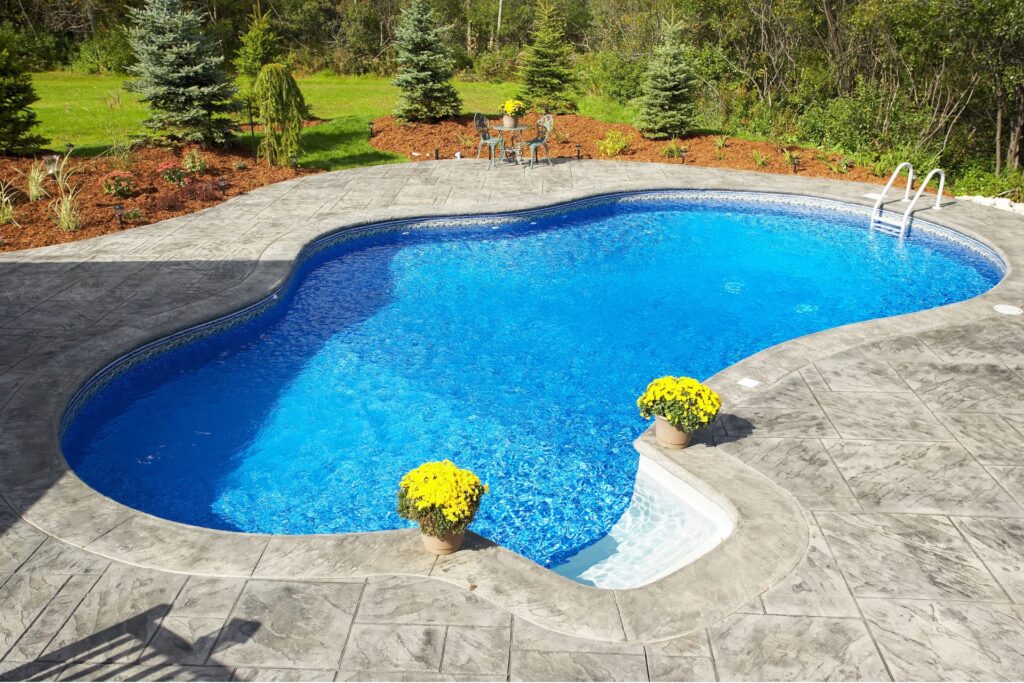Welcome to our comprehensive guide on transforming your concrete patio. Whether you’re looking to add a splash of vibrant color or enhance its natural beauty, deciding between painting or sealing is crucial. This post will delve into the pros and cons of each option, offer step-by-step guides for both processes and provide expert opinions to help you make the best choice for your outdoor space. By the end, you’ll have all the information you need to create a patio that not only looks great but also stands up to the elements. Let’s explore which option is right for you: painting or sealing your concrete patio.
When deciding between painting or sealing your concrete patio, consider the benefits and drawbacks of each option. Painting offers a wide range of colors and designs, enhancing your patio’s aesthetics but requires regular maintenance. Sealing, on the other hand, preserves the natural look of concrete, providing long-lasting protection against weather and stains with less upkeep. Your choice will depend on your aesthetic preferences, budget, and the level of maintenance you’re willing to undertake.
- Understanding The Basics
- Pros And Cons Of Painting Concrete Patios
- Pros And Cons Of Sealing Concrete Patios
- Factors To Consider
- Step-By-Step Guide: How To Paint Your Concrete Patio
- Step-By-Step Guide: How To Seal Your Concrete Patio
- Case Studies And Real-Life Examples
- Expert Opinions
- Common Mistakes To Avoid
- FAQs: About Should I Paint Or Seal My Concrete Patio
- Conclusion
- Find A Professional Concrete Company Near You!
Understanding The Basics
What is Concrete Patio Painting?
Concrete patio painting involves applying a layer of paint to the surface of your concrete patio to enhance its appearance and protect it from the elements. The purpose of painting concrete is not just aesthetic; it also provides a protective barrier against moisture, UV rays, and general wear and tear. Over time, concrete can become stained and weathered, but a fresh coat of paint can rejuvenate its look and extend its lifespan.
There are several types of paint suitable for concrete patios, each with its own advantages. Acrylic latex paint is a popular choice due to its durability and resistance to weather conditions. It’s easy to apply and available in various colors, allowing homeowners to customize their patio’s appearance. Epoxy-based paints are another excellent option, known for their robustness and ability to withstand heavy traffic and harsh weather. They provide a glossy finish and are ideal for areas that experience frequent use. Masonry paint, specifically designed for porous surfaces like concrete, offers excellent adhesion and longevity. It penetrates the surface, providing a more durable and long-lasting finish.
What is Concrete Patio Sealing?
Concrete patio sealing is the process of applying a protective layer, or sealer, to the surface of the concrete. The primary purpose of sealing concrete is to protect it from water damage, stains, and surface abrasion. Sealers create a barrier that prevents water, oils, and other contaminants from penetrating the concrete, thereby reducing the risk of cracks, spalling, and other forms of deterioration.
There are several types of sealers available for concrete patios, each suited to different needs and preferences. Penetrating sealers, such as silane, siloxane, and silicones, are absorbed into the concrete, providing protection from within without altering the surface’s appearance. These sealers are ideal for maintaining the natural look of the concrete while offering excellent protection against water and chemical intrusion. Film-forming sealers, including acrylics, polyurethanes, and epoxies, create a protective layer on the surface of the concrete. These sealers can enhance the appearance of the patio by adding a sheen or gloss and are excellent for preventing stains and surface damage. Lastly, topical sealers are applied to the surface and can significantly enhance the color and texture of the concrete while providing a high level of protection against wear and tear.
By understanding the basics of concrete patio painting and sealing, homeowners can make informed decisions to enhance and protect their outdoor spaces effectively. Whether choosing the vibrant finish of a painted patio or the robust protection of a sealed surface, both methods offer significant benefits that can prolong the life and beauty of concrete patios.

Pros And Cons Of Painting Concrete Patios
Painting concrete patios is a popular way to enhance the look of your outdoor space, but like any home improvement project, it comes with its own set of advantages and disadvantages. Understanding these can help you make an informed decision about whether painting your concrete patio is the right choice for you.
Pros
Aesthetic Flexibility and Color Options
One of the biggest advantages of painting a concrete patio is the incredible flexibility it offers in terms of aesthetics. With a wide range of colors and finishes available, you can easily customize the look of your patio to match your personal style or the existing decor of your home. Whether you prefer a bold, vibrant color that makes a statement or a more subdued, neutral tone that blends seamlessly with your surroundings, painting provides you with the creative freedom to achieve your desired look.
Potential to Match Home Decor and Themes
Painting your concrete patio allows you to create a cohesive design theme that extends from the interior of your home to your outdoor living space. This can be particularly beneficial if you have a specific color palette or design theme that you want to carry through your entire property. By choosing paint colors and finishes that complement your home’s decor, you can create a unified and harmonious look that enhances the overall aesthetic appeal of your property.
Protection Against Weather and Wear
A painted concrete patio is not only about aesthetics; it also provides a layer of protection against the elements. High-quality exterior paint can act as a barrier, protecting the concrete from moisture, UV rays, and other environmental factors that can cause damage over time. This added layer of protection can help to extend the life of your patio, reducing the need for costly repairs or replacements in the future.
Cons
Maintenance Requirements (Repainting Frequency)
One of the primary downsides to painting a concrete patio is the maintenance involved. Unlike some other finishes, paint can wear down over time, especially in high-traffic areas. This means that you may need to repaint your patio periodically to keep it looking fresh and vibrant. Depending on the type of paint used and the level of foot traffic, this could be required every few years, which is something to consider in terms of time and cost.
Potential for Peeling and Chipping
Another common issue with painted concrete is the potential for peeling and chipping. Exposure to the elements, combined with regular use, can cause the paint to deteriorate over time. This can result in unsightly patches where the paint has flaked off, detracting from the overall appearance of your patio. Proper surface preparation and the use of high-quality, durable paint can help mitigate this issue, but it is something to be aware of.
Surface Preparation Needed Before Painting
Painting a concrete patio is not as simple as just applying a coat of paint. The surface must be thoroughly cleaned and prepared before painting to ensure that the paint adheres properly and lasts as long as possible. This preparation can involve cleaning the concrete to remove dirt, grime, and existing coatings, as well as repairing any cracks or imperfections in the surface. This additional step adds to the time and effort required for the project, but it is crucial for achieving a professional and long-lasting finish.
Painting your concrete patio offers a versatile and cost-effective way to enhance your outdoor living space. The wide range of color options allows you to create a look that is uniquely yours, while also providing some protection against the elements. However, it is important to weigh these benefits against the maintenance requirements and potential issues such as peeling and chipping. By carefully considering the pros and cons, you can determine whether painting your concrete patio is the best option for your needs and preferences.

Pros And Cons Of Sealing Concrete Patios
When it comes to maintaining and enhancing the look of your concrete patio, sealing is a popular option. However, like any home improvement decision, it has its advantages and disadvantages. Here’s a detailed breakdown to help you make an informed choice.
Pros
Enhances Natural Beauty of the Concrete
One of the primary benefits of sealing your concrete patio is that it enhances its natural beauty. A high-quality sealer brings out the rich colors and textures of the concrete, giving it a glossy finish that looks fresh and vibrant. This can make your patio more appealing and inviting, increasing the overall aesthetic value of your outdoor space.
Provides Protection Against Moisture, Stains, and Wear
Sealing your concrete patio adds a protective layer that guards against moisture penetration, which can cause cracks and damage over time. This barrier also prevents stains from spills, such as oil, grease, or food, making it easier to clean and maintain. Additionally, it protects against wear and tear from foot traffic, extending the lifespan of your patio.
Low Maintenance Compared to Painting
Unlike painted surfaces, sealed concrete requires minimal maintenance. Painting concrete can chip, peel, or fade over time, necessitating frequent touch-ups and repainting. Sealed concrete, on the other hand, retains its appearance for longer periods with just occasional resealing. This makes it a cost-effective and time-saving option in the long run.
Cons
Limited Aesthetic Options (Natural Look Only)
While sealing enhances the natural look of concrete, it does limit your aesthetic options. If you’re looking for a dramatic change in color or design, sealing might not be the best choice. Paint or decorative overlays can offer a wider variety of colors and patterns, but they don’t provide the same level of protection as a sealant.
Initial Cost and Application Effort
The initial cost of sealing a concrete patio can be relatively high. You’ll need to purchase quality sealant and possibly hire a professional for the best results. The application process itself requires thorough cleaning and preparation of the surface, which can be labor-intensive and time-consuming. This upfront investment may deter some homeowners.
Needs Reapplication Over Time
Sealers are not a one-time solution. Over time, the protective layer will wear down and require reapplication. Depending on the type of sealer and the level of traffic your patio endures, this could be every few years. While this maintenance is less frequent than painting, it’s still a recurring task that needs to be considered.
In conclusion, sealing your concrete patio can significantly enhance its appearance and longevity. It offers excellent protection and low maintenance but comes with some aesthetic limitations and ongoing upkeep. Weighing these pros and cons will help you decide if sealing is the right choice for your patio.

Factors To Consider
When deciding between painting and sealing your surfaces, several critical factors need to be evaluated to make the best choice for your specific situation. These factors ensure that you get the most out of your investment, both in terms of aesthetics and functionality. Here are some key considerations:
Climate and Weather
One of the most significant factors to consider is the climate and weather conditions in your area. Different weather conditions can dramatically impact the longevity and performance of both paint and sealers. For instance, if you live in a region with harsh winters or hot, humid summers, these extreme conditions can cause painted surfaces to crack and peel over time. On the other hand, sealers, especially those designed for specific climates, can provide a more durable and weather-resistant finish. It’s crucial to choose products that are formulated to withstand the specific climate conditions your surfaces will face.
Usage and Foot Traffic
The amount of use and foot traffic your surfaces will endure is another important factor. High-traffic areas, such as walkways, driveways, and patios, require more durable finishes. Painted surfaces, while offering a wide range of vibrant colors and finishes, can wear down more quickly under heavy foot traffic. This can lead to frequent touch-ups and repaints, increasing long-term maintenance costs. Sealed surfaces, however, tend to be more robust and can handle heavy use better, making them a more practical choice for areas that see a lot of wear and tear.
Personal Aesthetic Preferences
Your personal aesthetic preferences play a significant role in deciding whether to paint or seal your surfaces. Paint offers a vast array of color options, allowing for creative expression and the ability to match or complement the surrounding decor. If you love the idea of vibrant, bold colors, painting might be the way to go. On the other hand, sealers can enhance the natural beauty of the material, bringing out the inherent texture and color of surfaces like wood, concrete, or stone. If you prefer a more natural, understated look, sealing might be your best option.
Budget Considerations
Finally, budget considerations are crucial when choosing between painting and sealing. Initially, painting might seem more affordable, especially if you’re doing a DIY project. However, it’s important to factor in the long-term maintenance costs. Painted surfaces may require more frequent reapplications, touch-ups, and potential repairs, which can add up over time. Sealers, while sometimes more expensive up front, often offer greater durability and lower maintenance costs in the long run. Comparing the overall cost, including future maintenance, will help you make a more informed decision that fits your budget.
By carefully considering these factors—climate and weather, usage and foot traffic, personal aesthetic preferences, and budget—you can make a well-informed choice between painting and sealing your surfaces. This approach ensures that you not only achieve the desired look but also enjoy long-lasting results that offer good value for your investment.

Step-By-Step Guide: How To Paint Your Concrete Patio
Preparation
Painting a concrete patio begins with thorough preparation. This step is crucial for ensuring the paint adheres properly and lasts longer. Here’s a detailed breakdown of the preparation process:
1. Cleaning and Repairing the Surface
Clean the Patio: Start by removing any dirt, debris, or loose particles from the concrete surface. Use a stiff-bristled broom or a pressure washer for this task. For stubborn stains or mildew, a mixture of water and mild detergent can be effective.
Repair Cracks and Holes: Inspect the concrete for any cracks or holes. Use a concrete patching compound to fill these imperfections. Smooth out the patched areas with a trowel and let them dry completely before moving on.
2. Priming the Concrete
Choose the Right Primer: A concrete primer is essential for sealing the porous surface and providing a smooth base for the paint. Select a primer specifically designed for masonry or concrete.
Apply the Primer: Use a paint roller or brush to apply an even coat of primer over the entire patio surface. Allow the primer to dry according to the manufacturer’s instructions, usually around 24 hours, to ensure it bonds well with the concrete.
Painting Process
Once the surface is properly prepared and primed, it’s time to move on to the painting process. This step involves choosing the right paint and applying it correctly to achieve a durable and attractive finish.
1. Choosing the Right Paint
Select Concrete Paint: For outdoor patios, choose a paint specifically formulated for concrete surfaces. These paints are designed to withstand the elements and provide a long-lasting finish. Look for options like acrylic latex paint or epoxy-based paint for best results.
2. Application Techniques for Even Coverage
Tools and Methods: Use a high-quality roller with a thick nap to apply the paint. Start by cutting in around the edges with a brush, then roll the paint onto the larger areas. Apply the paint in thin, even coats to avoid drips and uneven coverage.
Second Coat: After the first coat has dried (usually 24 hours), apply a second coat for a more durable and uniform finish. This step is particularly important for high-traffic areas.
3. Drying and Curing Times:
Allow Proper Drying: Ensure the painted patio dries completely before use. Check the paint manufacturer’s instructions for specific drying and curing times, which can vary depending on the type of paint used and the weather conditions. Typically, it takes 24-48 hours for the paint to dry and up to a week to cure fully.
Maintenance Tips
Maintaining a painted concrete patio involves regular upkeep to preserve its appearance and longevity. Follow these maintenance tips to keep your patio looking its best:
1. Regular Cleaning:
Sweep and Wash: Regularly sweep the patio to remove dirt and debris. Wash the surface with a mild detergent and water mixture every few months to prevent grime buildup.
2. Touch-Up and Repainting Schedule:
Touch-Up Small Areas: Inspect the patio periodically for any signs of wear or damage. Touch up small areas with leftover paint to prevent further deterioration.
Repaint Every Few Years: Depending on the paint quality and usage, consider repainting the patio every 2-3 years to maintain its fresh appearance. Follow the same preparation and painting steps for the best results.
By following these detailed steps and maintenance tips, you can transform your concrete patio into an attractive, durable outdoor space that withstands the test of time.
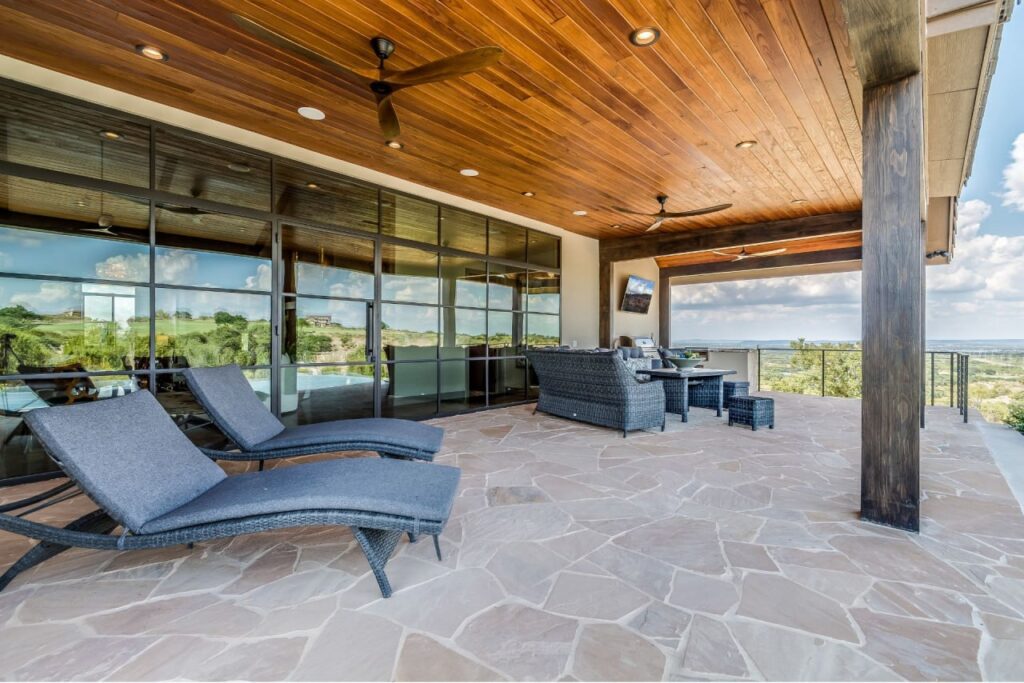
Step-By-Step Guide: How To Seal Your Concrete Patio
Sealing your concrete patio not only enhances its appearance but also extends its lifespan. A well-sealed patio is more resistant to stains, weather damage, and wear and tear. Here’s a detailed, step-by-step guide on how to seal your concrete patio effectively.
Preparation
Cleaning and Repairing the Surface
Before applying any sealer, it’s crucial to clean and repair the concrete surface thoroughly. Start by removing all furniture and debris from the patio. Use a broom or leaf blower to clear away loose dirt and leaves. For a more thorough clean, use a pressure washer to eliminate stubborn dirt and grime. If your patio has stains, especially from oil or grease, consider using a degreaser or specialized concrete cleaner.
Next, inspect the surface for any cracks or chips. Small cracks can be filled with a concrete patching compound, while larger ones may require a more extensive repair. Allow any repairs to cure fully before moving on to the next step.
Selecting the Appropriate Sealer
Choosing the right sealer is critical for the success of your project. There are various types of concrete sealers available, including acrylic, epoxy, polyurethane, and penetrating sealers. Each type has its advantages. For example, acrylic sealers are easy to apply and provide a glossy finish, while penetrating sealers offer superior protection against moisture. Consider your patio’s specific needs and the look you want to achieve when selecting a sealer.
Sealing Process
Application Techniques for Different Types of Sealers
The application process can vary depending on the type of sealer you choose. For most sealers, you’ll need a roller, sprayer, or brush.
1. Acrylic Sealers: These can be applied using a roller or sprayer. Start by pouring the sealer into a paint tray. Dip your roller into the tray and apply a thin, even coat across the concrete surface. If you’re using a sprayer, make sure to hold it at a consistent distance from the surface and apply in sweeping motions to avoid pooling.
2. Epoxy Sealers: These often come in two parts that need to be mixed before application. Use a roller to apply the mixture, and be sure to work quickly as epoxy can harden fast. Apply in thin, even layers for the best results.
3. Penetrating Sealers: These are typically applied with a sprayer. Ensure you cover the entire surface evenly. Penetrating sealers soak into the concrete, providing long-lasting protection without altering the surface appearance.
Drying and Curing Times
After applying the sealer, allow it to dry and cure according to the manufacturer’s instructions. Drying times can vary from a few hours to a full day, depending on the type of sealer and weather conditions. Avoid walking on the patio during this time to prevent any marks or damage. For the best protection, allow the sealer to cure completely, which might take up to several days.
Maintenance Tips
Regular Cleaning
To maintain your sealed concrete patio, regular cleaning is essential. Sweep the surface regularly to remove dirt and debris. For a deeper clean, use a mild detergent and water solution with a soft-bristle brush. Avoid harsh chemicals that can degrade the sealer.
Resealing Schedule to Maintain Protection
Even the best sealers wear down over time. To keep your patio protected, it’s important to reseal it periodically. The resealing schedule can vary based on the type of sealer used and the amount of traffic the patio receives. Generally, it’s a good idea to reseal every 2-3 years. Before resealing, clean the surface thoroughly and follow the same application techniques as the initial sealing.
By following these steps, you can ensure your concrete patio remains beautiful and durable for years to come. Regular maintenance and timely resealing will keep it looking its best, enhancing your outdoor space’s overall appeal.
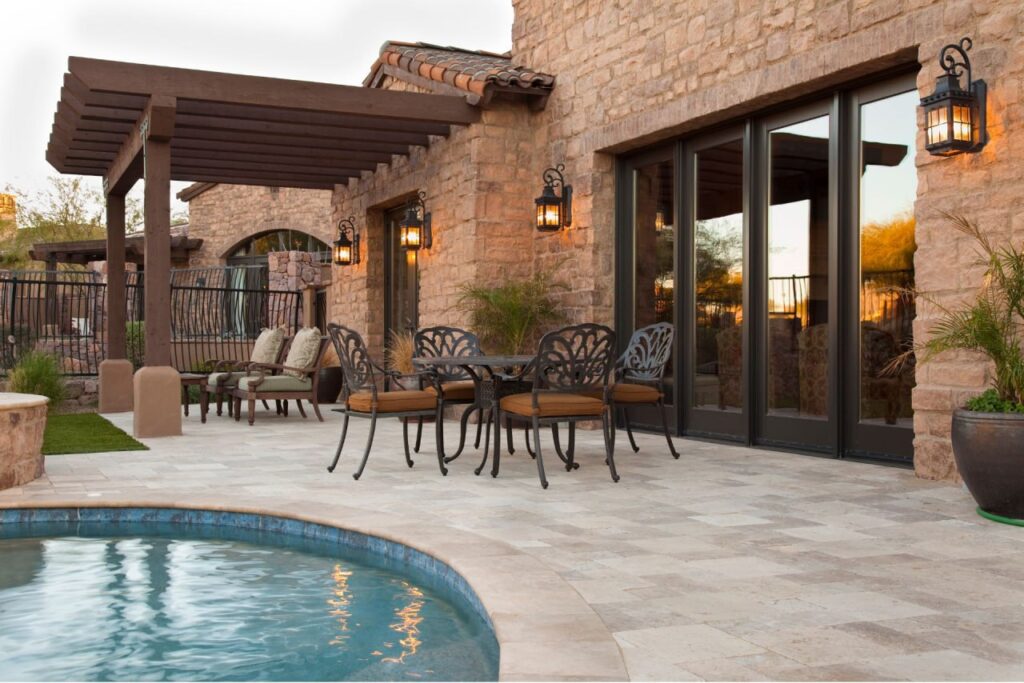
Case Studies And Real-Life Examples
Example 1: Painted Patio Transformation
Homeowners often look for ways to enhance their outdoor living spaces, and a painted patio can make a significant difference. One such example is the transformation of the Smith family’s patio.
Before and After Pictures
Before embarking on their patio renovation, the Smiths had a plain concrete patio that had seen better days. The surface was cracked, discolored, and generally uninviting. They decided to give their patio a facelift by painting it with a vibrant, weather-resistant paint.
The transformation was nothing short of remarkable. The once dull and drab patio became a lively and welcoming space, perfect for outdoor gatherings and relaxation. The before and after pictures vividly illustrate this change, showcasing the potential of a painted patio to revitalize an outdoor area.
Homeowner’s Experience and Feedback
The Smiths were thrilled with the results. They reported that the painting process was straightforward, and the final outcome exceeded their expectations. Not only did the new paint cover the imperfections, but it also added a layer of protection against the elements, ensuring the patio would look great for years to come.
They noted that the painted surface was easy to clean and maintain, a significant improvement from the porous and stain-prone bare concrete. The vibrant color also brought a sense of joy and freshness to their outdoor living space. The Smiths shared their positive experience with friends and family, many of whom were inspired to consider similar projects for their homes.
Example 2: Sealed Patio Longevity
Another impressive case study highlights the long-term benefits of sealing a patio, demonstrated by the Johnson family’s experience.
Before and After Pictures
Before sealing their patio, the Johnsons faced issues with water seepage, mold growth, and surface degradation. The patio was constantly damp, leading to unsightly stains and slippery surfaces. Concerned about safety and durability, they opted to have their patio professionally sealed.
The sealing process made a substantial difference. The patio’s appearance improved dramatically, with a clean, polished look that highlighted the natural beauty of the stone. The before and after pictures clearly show the enhanced aesthetic and structural integrity of the sealed patio.
Homeowner’s Experience and Feedback
The Johnsons were extremely pleased with their decision to seal the patio. They noticed an immediate improvement in the patio’s condition. The sealant provided a robust barrier against moisture, preventing water damage and mold growth. This not only improved the patio’s appearance but also significantly extended its lifespan.
The Johnsons appreciated the low-maintenance nature of the sealed surface. Spills and dirt could be easily wiped away, and the patio remained dry even after heavy rain. They also observed that the sealant helped preserve the patio’s color, preventing fading from UV exposure.
Overall, the Johnsons were delighted with the durability and enhanced aesthetics of their sealed patio. They found that investing in sealing was a cost-effective way to maintain and improve their outdoor space, and they highly recommended it to others facing similar issues.
By sharing these real-life examples, we hope to inspire homeowners to explore the benefits of painting or sealing their patios. These case studies demonstrate that with the right approach, any patio can be transformed into a beautiful, functional, and long-lasting outdoor living area.

Expert Opinions
Interview with a Professional Painter
When it comes to home improvement projects, understanding the nuances between different options can make a significant difference in the outcome. To gain a deeper understanding of when painting is the optimal choice, we sat down with a professional painter with over 20 years of experience in the industry.
Insights on When Painting is the Best Choice
The expert began by emphasizing the versatility and aesthetic appeal of painting. According to him, painting is often the best choice for homeowners looking to refresh the look of their interiors and exteriors without making structural changes. He highlighted several scenarios where the painting stands out:
1. Cosmetic Updates: If the goal is to simply change the color scheme or update the look of a room, painting is the quickest and most cost-effective option. It allows homeowners to personalize their space with minimal disruption.
2. Covering Imperfections: For walls with minor imperfections like small cracks, stains, or outdated finishes, a fresh coat of paint can effectively cover these flaws, giving the surface a smooth, new look.
3. Protecting Surfaces: Paint acts as a protective layer for surfaces, especially exterior walls. It can shield against weather elements, moisture, and even pests, extending the life of the material underneath.
4. Boosting Property Value: A freshly painted home can significantly enhance curb appeal and make a property more attractive to potential buyers. The expert noted that this is one of the simplest ways to increase a home’s market value.
5. Quick Transformations: For those looking to make a dramatic change in a short period, painting is the ideal solution. It can transform the ambiance of a room from dull to vibrant in just a few days.
Interview with a Concrete Sealing Expert
To explore the benefits of sealing over painting, we interviewed a concrete sealing expert with extensive experience in preserving and enhancing concrete surfaces.
Insights on When Sealing is the Best Choice
The expert explained that sealing is crucial for maintaining the durability and appearance of concrete. Here are the key points from our conversation:
1. Enhancing Durability: Sealing concrete is essential for protecting it from various elements. The expert stressed that sealed concrete surfaces are more resistant to water, chemicals, and abrasions, which can extend their lifespan significantly.
2. Preventing Stains and Damage: Unsealed concrete can easily absorb liquids, leading to stains and potential structural damage over time. Sealing creates a barrier that prevents this, keeping the surface looking clean and intact.
3. Improving Appearance: Sealing can enhance the natural look of concrete by bringing out its color and texture. This is particularly important for decorative concrete surfaces where aesthetics are a priority.
4. Reducing Maintenance: Sealed concrete is easier to clean and maintain. The expert pointed out that this is a major advantage for both residential and commercial properties, as it reduces the effort and cost involved in upkeep.
5. Weather Protection: In areas with extreme weather conditions, sealing concrete can prevent freeze-thaw damage and other weather-related issues. The expert noted that this is especially important for exterior surfaces exposed to harsh climates.
Choosing between painting and sealing depends largely on the specific needs and conditions of the project. Painting offers aesthetic versatility and quick updates, making it ideal for cosmetic changes and interior spaces. On the other hand, sealing provides long-term protection and durability, which is crucial for maintaining and enhancing concrete surfaces. By considering the expert insights shared above, homeowners can make more informed decisions to achieve the best results for their properties.
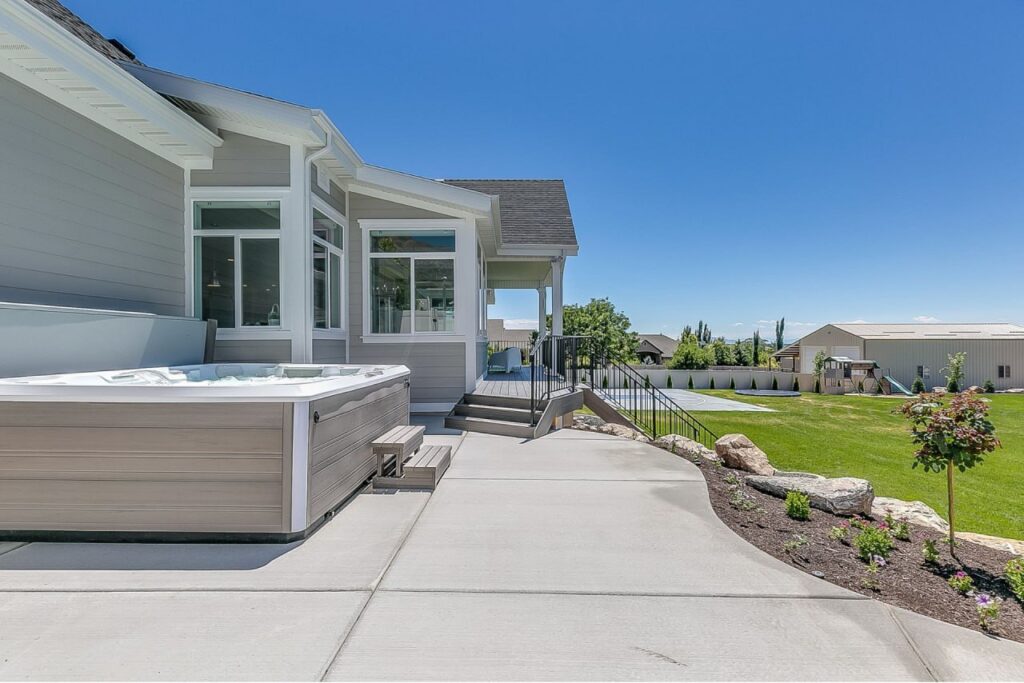
Common Mistakes To Avoid
In the world of home improvement, particularly when it comes to painting and sealing, there are several common mistakes that homeowners frequently make. Avoiding these pitfalls can save you time, money, and frustration. Let’s dive into some of the most prevalent errors and how to steer clear of them.
Painting Mistakes
Skipping Surface Preparation
One of the biggest mistakes in painting is neglecting the preparation of the surface. Proper preparation is crucial for achieving a smooth, long-lasting finish. This step involves cleaning the surface, sanding it down, and applying a primer. Skipping these steps can lead to paint not adhering correctly, resulting in peeling, bubbling, and an overall uneven appearance. Always make sure to thoroughly prep your surface before picking up that paintbrush.
Using the Wrong Type of Paint
Another common error is using the incorrect type of paint for your project. Paints are formulated differently for various surfaces and conditions. For instance, exterior paints are designed to withstand the elements, while interior paints are not. Additionally, different finishes (such as matte, eggshell, and gloss) serve distinct purposes and have unique durability levels. Using the wrong type of paint can result in a finish that doesn’t hold up or look as intended. Always choose the appropriate paint for your specific project to ensure optimal results.
Sealing Mistakes
Applying Sealer on Damp or Dirty Surfaces
Sealing is a critical step in protecting surfaces from moisture, stains, and wear. However, applying a sealer on a surface that is damp or dirty can cause significant issues. The sealer may not adhere properly, leading to bubbles, peeling, or a cloudy appearance. To avoid this, ensure the surface is completely clean and dry before applying the sealer. This may require washing the area and allowing ample drying time.
Overapplying or Underapplying Sealer
Finding the right balance when applying a sealer is essential. Overapplying can lead to a sticky or tacky finish that takes an extended time to cure, while underapplying may not provide adequate protection. Follow the manufacturer’s instructions carefully to apply the correct amount. Applying thin, even coats and allowing each layer to dry completely before applying the next will yield the best results.
By understanding and avoiding these common mistakes, you can achieve a professional-looking finish on your painting and sealing projects. Proper preparation and careful application are key to ensuring the durability and aesthetic appeal of your work. Remember, taking the time to do it right the first time can save you from headaches down the road.
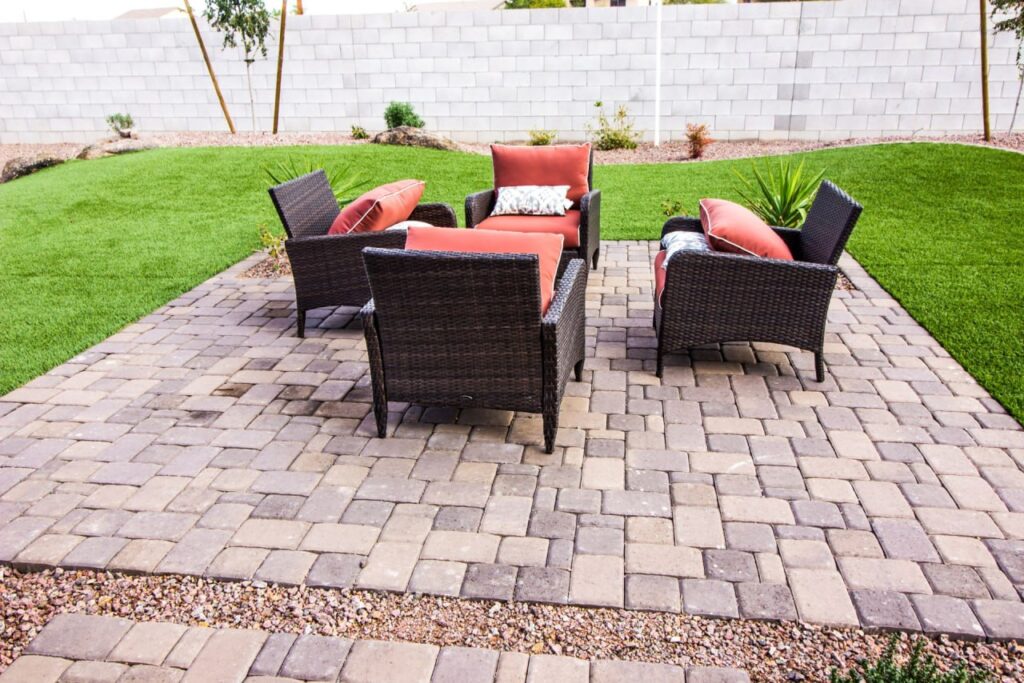
FAQs: About Should I Paint Or Seal My Concrete Patio
Conclusion
In summary, understanding the pros and cons of painting and sealing is essential for achieving a successful home improvement project. Proper surface preparation and choosing the right type of paint or sealer are crucial steps to avoid common mistakes such as peeling, bubbling, or inadequate protection. When making a decision, consider your specific needs and the conditions of the surfaces you’re working on. By taking the time to prepare and apply materials correctly, you can ensure lasting and aesthetically pleasing results. We encourage you to share your experiences or ask questions in the comments below and subscribe to our blog for more expert home improvement tips and advice.
Find A Professional Concrete Company Near You!
- Christchurch Concrete Services
- Concrete Contractors Nelson
- Concrete Contractors Tauranga
- Concrete Dannevirke
- Concrete Driveways Lower Hutt
- Concrete Driveways Upper Hutt
- Concrete Foundations Kapiti
- Concrete Layers Auckland
- Concrete Layers Cambridge
- Concrete Layers Hamilton
- Concrete Layers Invercargill
- Concrete Layers Kapiti
- Concrete Layers Leigh
- Concrete Layers Levin
- Concrete Layers Mangawhai
- Concrete Layers Matakana
- Concrete Layers Northland
- Concrete Layers Orewa
- Concrete Layers Palmerston North
- Concrete Layers Pukekohe
- Concrete Layers Rodney
- Concrete Layers Silverdale
- Concrete Layers Te Awamutu
- Concrete Layers Upper Hutt
- Concrete Layers Waikato
- Concrete Layers Warkworth
- Concrete Layers Wellington
- Concrete Layers Wellsford
- Concrete Manuwatu
- Concrete Services Rotorua
- Concrete Whangarei
- Hastings Concrete Company
- Hawkes Bay Concrete Company
- Napier Concrete Company
About the Author:
Mike Veail is a recognized digital marketing expert with over 6 years of experience in helping tradespeople and small businesses thrive online. A former quantity surveyor, Mike combines deep industry knowledge with hands-on expertise in SEO and Google Ads. His marketing strategies are tailored to the specific needs of the trades sector, helping businesses increase visibility and generate more leads through proven, ethical methods.
Mike has successfully partnered with numerous companies, establishing a track record of delivering measurable results. His work has been featured across various platforms that showcase his expertise in lead generation and online marketing for the trades sector.
Learn more about Mike's experience and services at https://theleadguy.online or follow him on social media:

